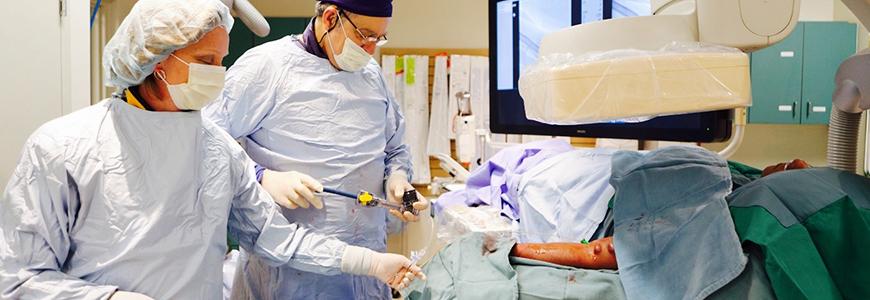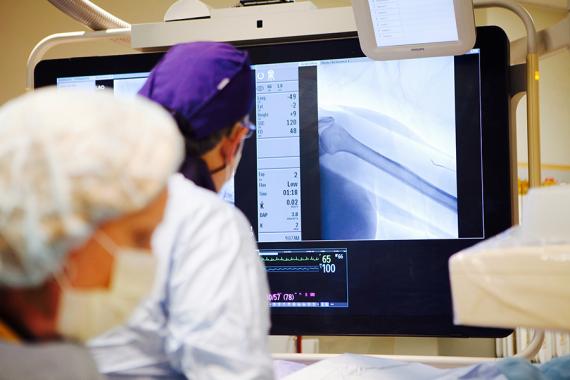
Interventional Radiology
Interventional radiology is touted as a speedier and safer alternative to open surgery for many conditions.
Interventional radiology is a specialty of radiology that provides minimally invasive, targeted treatments performed using imaging for guidance. Interventional Radiologists use their expertise in reading X-rays, ultrasound, MRI and other diagnostic imaging, to guide tiny instruments, such as catheters, through blood vessels or through the skin to treat a wide variety of medical conditions that in the past would have required surgery.
Interventional radiology first evolved in the 1960s, when angioplasty procedures were developed to treat blockages in arteries as an alternative to open surgical bypass. Since then, the ability of interventional radiology techniques to treat an ever-expanding list of conditions continues to grow.
Interventional radiology is now used to treat blockages inside arteries and veins, to block off blood vessels that nourish tumors, destroy malignant tumors using focused heat and freezing, drain blocked organ systems such as the liver, gallbladder and kidney, and perform biopsies that would otherwise require surgical exploration.
What are the advantages of interventional radiology?
- Most procedures can be performed on an outpatient basis or require only a short hospital stay.
- General anesthesia usually is not required.
- Risk, pain and recovery time are often significantly reduced.
- The procedures are sometimes less expensive than surgery or other alternatives.






